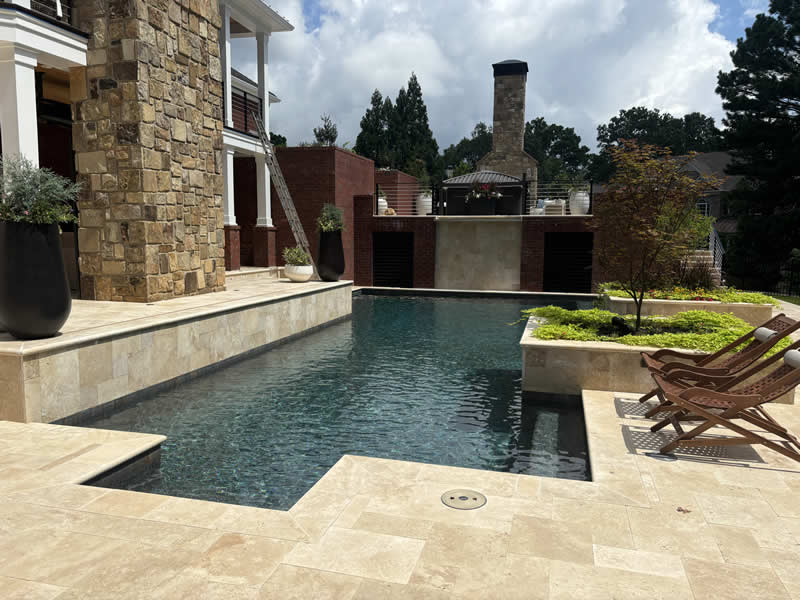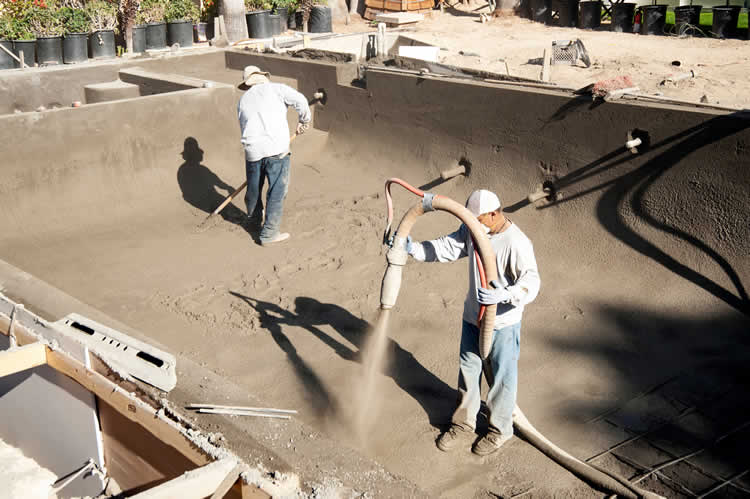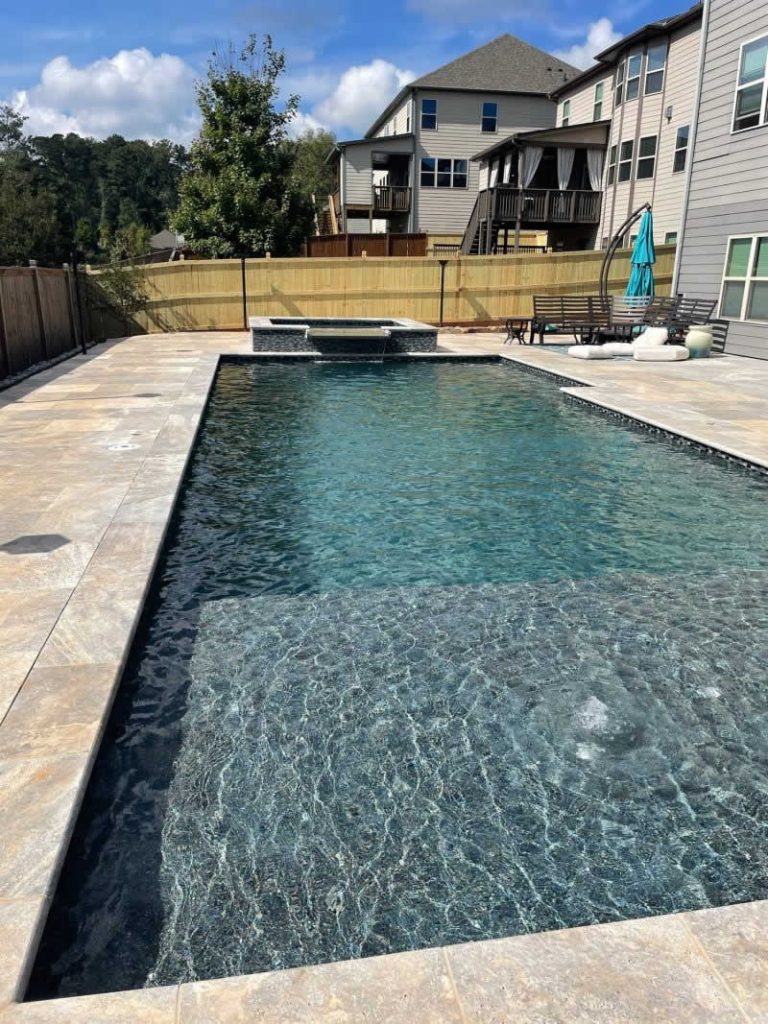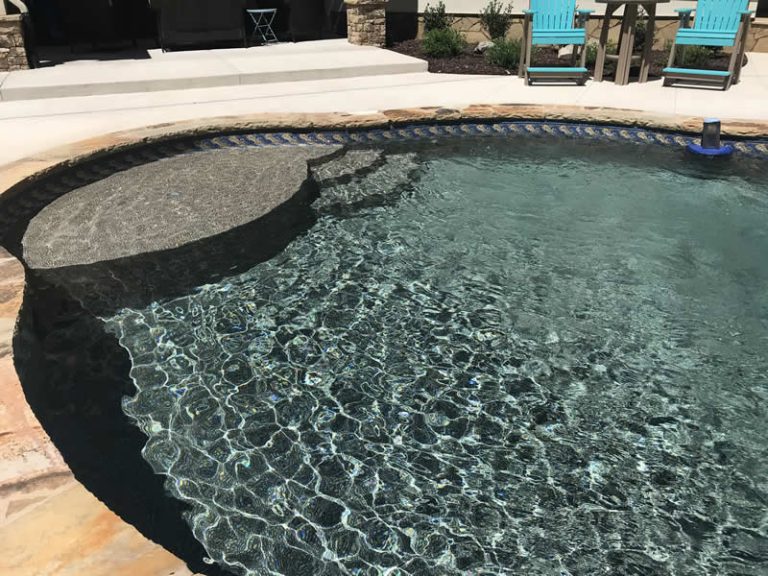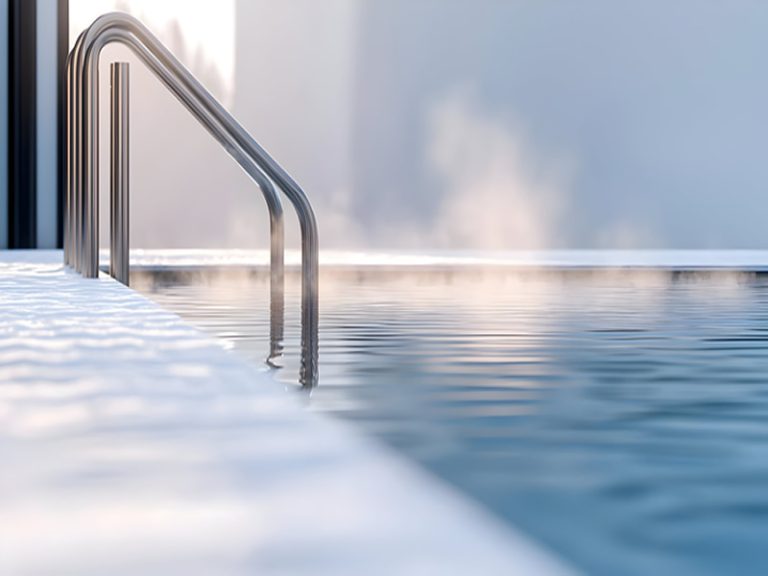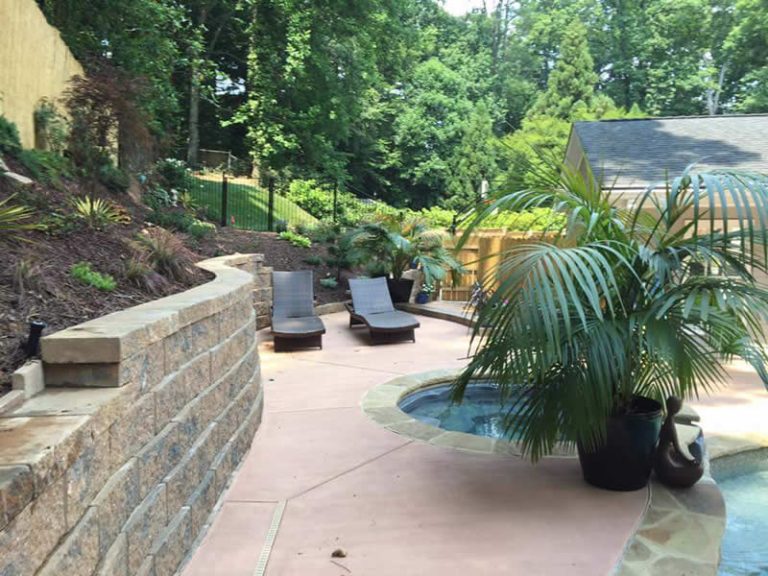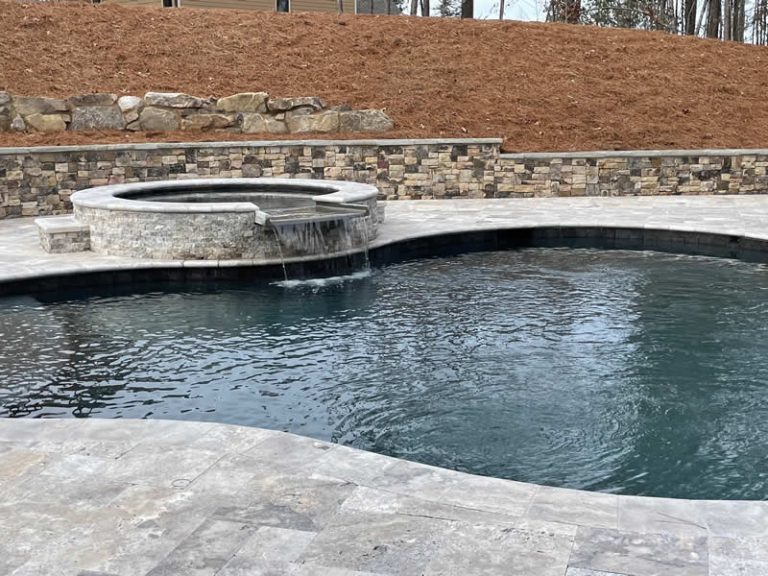Freeform or Geometric: Choosing the Right Look for Your Home
When you picture your dream pool, what do you see — crisp straight lines or smooth, flowing curves? That first image says a lot about what kind of pool design fits your personality, your home’s architecture, and even how you’ll use it. Most pools fall into one of two main design families: geometric or freeform. And while both can be stunning, they create very different moods in a backyard.
I’ve spent decades helping families across North Georgia pick the right layout for their space, and the choice often comes down to one question: do you want your pool to stand out or blend in?
What Geometric Pools Say About a Home
A geometric pool is all about order. Straight lines, sharp angles, and symmetry define this style. The classic rectangle is the most common, but you’ll also see Roman, Grecian, and L-shaped layouts that carry the same structured aesthetic. These pools pair naturally with modern, colonial, and mid-century homes — any architecture that values balance and precision.
Geometric pools give off a sense of calm and control. They’re easy to design around, and they make outdoor spaces look tidy and intentional. Add a row of pavers, some crisp landscaping, or a fire pit along the edge, and it suddenly feels like an extension of your home’s architecture instead of a separate feature. If your house already has strong geometry — think brickwork, columns, or modern trim — a rectangular or square pool will fit right in.
They’re also functional. Straight edges make it easier to install automatic covers, lane markers, and pool covers. The plumbing is simple, and circulation is efficient because the water flows evenly from one end to the other. It’s not just a clean look — it’s a practical one.
The Personality of Freeform Pools
Freeform pools, by contrast, take their cues from nature. Their curves mimic ponds, lagoons, or small lakes, giving your backyard a relaxed, organic feel. You’ll see them paired with stone waterfalls, palm plantings, and irregular patios that create a natural oasis rather than a defined geometric layout.
This design feels especially at home in North Georgia yards with uneven terrain, mature trees, or gentle slopes. Instead of fighting the landscape, a freeform pool blends into it. You can tuck one beside a rock wall or weave it around existing garden beds without it looking forced. Families often choose freeform designs because they feel softer and more inviting — less “showpiece,” more “come in and enjoy.”
From a builder’s standpoint, freeform pools take a little more finesse. Each curve changes how the rebar is bent, how the forms are shaped, and how water circulates. But when it’s done right, the effect is worth every extra step. A freeform pool feels alive — the light moves differently across it, and the reflections shift with every breeze.
How Each Design Impacts Cost and Maintenance
There’s a bit of a cost difference between the two styles, mostly related to labor. Geometric pools, especially in gunite, are simpler to frame and measure, which keeps construction time predictable. Freeform shapes involve more handwork and can add a small premium depending on size and detail. Fiberglass pools balance this out since most freeform options come pre-molded — no extra labor required once you pick the model.
In terms of maintenance, geometric pools are easier to circulate and clean because their symmetry leaves fewer “dead zones.” Water flows more predictably, and robotic cleaners navigate easily along straight edges. Freeform pools just need a bit more planning up front to make sure jets, drains, and returns are positioned for full coverage.
That said, both types can be almost effortless to maintain with good design. Automation, variable-speed pumps, and modern cleaners make shape less of a concern than it used to be.
Matching Shape to Lifestyle
Beyond cost and upkeep, the real difference comes down to how you want to use your pool. If you’re the type who likes clean edges, pool games, or lap swimming, a rectangular shape will make your life easier. Everything feels structured — you know exactly where to swim, where to lounge, and where to entertain.
If your backyard gatherings are more about relaxation, conversation, or giving kids room to explore, a freeform layout might feel more comfortable. It breaks up the space naturally into zones: a shallow cove for tanning, a curved deep end for swimming, maybe a rock ledge for sitting with your feet in the water. It feels more casual and spontaneous, even if it’s carefully planned.
I’ve seen plenty of families start with one style in mind and end up switching after we mark the layout in their yard. Sometimes what looks great on paper doesn’t feel right once you’re standing there. The key is to visualize not just how it’ll look, but how it’ll feel when people are moving around it.
The Middle Ground: Hybrid Designs
Of course, not everything has to fit neatly into one box. Some of the most beautiful pools I’ve built combine both styles. You can start with a geometric footprint for structure, then soften the edges with rounded corners, an offset spa, or curved steps. This “transitional” style gives you the best of both worlds — clean lines for easy maintenance, gentle curves for visual movement.
Hybrid designs work especially well when your home’s architecture and your landscape don’t match stylistically. For instance, if you have a brick colonial home that backs up to a wooded lot, a structured pool with natural stone coping helps bridge the two worlds. It’s balanced without being boring.
Choosing What Fits You
At the end of the day, your pool’s shape should echo your home’s personality — and yours. Geometric pools say “classic and precise.” Freeform pools say “natural and relaxed.” Both can be showstoppers if they’re designed with intention.
If you’re torn between the two, stand outside where your pool will go and picture yourself there. Are you sipping coffee beside clean, sharp edges or lounging by a curved shoreline surrounded by greenery? That gut feeling usually tells the truth.
The right shape makes everything else — materials, lighting, landscaping — fall naturally into place. And when it does, your backyard doesn’t just look better. It feels like home.
Let’s Talk …
Let us take care of your Pool & landscape
At Aqua Fun, we don’t just build pools — we build relationships that last for seasons to come. Our team takes the time to understand your space, your needs, and how you actually use your backyard. Then we craft solutions that make every swim, soak, or gathering more enjoyable. It’s not about selling you more; it’s about helping you get it right.
If you’ve been thinking about improving, repairing, or re-imagining your pool, let’s talk. We’ll meet you where you are, explain your options clearly, and make sure the whole process feels simple and stress-free. That’s the Aqua Fun way — real people, real care, and results that speak for themselves.
Mon – Fri
8:00 – 6:00

